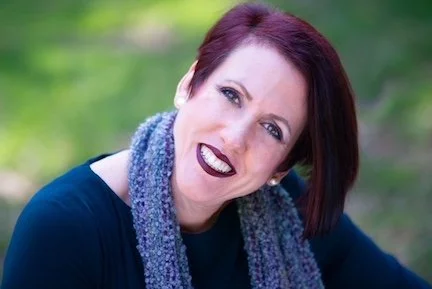
We blog regularly and post items we feel maybe of interest to our wonderful clients; check back regularly to see what we have posted.
World Alzheimer’s Day
There are at least 8 different types of dementia, not to mention there are mixed combinations as well. Some of the most common ones are: Alzheimer’s Disease, Vascular Dementia, Dementia with Lewy Bodies, Parkinson’s Disease Dementia, Frontotemporal Dementia, Huntington’s Disease, Creutzfeldt-Jakob Disease, Wernicke-Korsakoff syndrome, and Normal Pressure Hydrocephalus. Symptoms vary by type, but 10 of the most common warning signs are:
Every year September 21st is World Alzheimer’s Day around the world. This international campaign is aimed to raise awareness and challenge common stigma that surrounds Alzheimer related dementia.
Many people still wrongly believe that dementia is normal aging, which is why it is important to provide more awareness and knowledge.
There are at least 8 different types of dementia, not to mention there are mixed combinations as well. Some of the most common ones are: Alzheimer’s Disease, Vascular Dementia, Dementia with Lewy Bodies, Parkinson’s Disease Dementia, Frontotemporal Dementia, Huntington’s Disease, Creutzfeldt-Jakob Disease, Wernicke-Korsakoff syndrome, and Normal Pressure Hydrocephalus.
Symptoms vary by type, but 10 of the most common warning signs are:
- Memory loss
- Difficulty performing familiar tasks
- Problems with language
- Disorientation regarding time and place
- Poor or decreased judgment
- Problems keeping track of things
- Misplacing things
- Changes in mood and behavior
- Challenges understanding visual and spatial information
- Withdrawal from work or social activities
When these signs are new and affecting your daily life or the life of someone you know, you should talk to your doctor or seek out more information. Having an examination can exclude other treatable conditions (ex. Thyroid problems, urinary tract infection, depression). If the diagnosis is dementia, then it will give you the opportunity to obtain more information, resources, and support for yourself and those close to you.
When dementia affects someone close to you like a partner or parent, it can cause a lot of stress, anxiety, and grief.
My colleague Jill Johson-Young and myself are hosting a free virtual support group every third Saturday of the month to support and provide resources for the caregivers.
Some of the tips we share in there are:
- Never argue with the person who has dementia. Instead, agree. Remember it’s the
disease, not the person.
- Never reason. Instead divert.
- Never shame, instead distract.
- Never lecture, instead reassure.
- Never say “remember”, instead reminisce.
- Never say “I told you”, instead repeat.
- Never say “You can’t”, instead say what they can do.
- Never demand, instead ask.
- Never condescend, instead encourage.
- Never force, instead reinforce.
You can also find some more resources on our facebook page:
https://www.facebook.com/Riversidedementiasupport
If you or a loved one would like more information and/or support. I encourage you to reach out to me or our office Central Counseling Services (951) 778-0230. We have counselors available 6 days a week in two locations: Riverside and Murrieta.
Ilse Aerts, M.S., LMFT#96211, LPCC#6135
Stress-Relief Tips for Working Moms
Working moms are no strangers to stress. From having to balance with the expectations to carry out at any workplace, working moms also have to bear with the emotional rollercoaster of anxiety, guilt, frustration, joy, and all other emotions that come with motherhood. It is important to practice some self-care in between all of the highs and lows of being a mother and being part of a workforce.
It’s no secret that working moms are no strangers to stress. We have to balance the expectations of our workplaces, home, friends and family, and at the same time cope with the emotional rollercoaster of anxiety, guilt, frustration, joy, and all other emotions that come with motherhood. It is important to practice some self-care in between all of the highs and lows of being both a mother and being part of the workforce. I wanted to share some ideas about ways you can relieve the stress that comes from living in both of these worlds (and the rest of the world around us- inflation, traffic, conflict, elections, social justice- there is just so much, isn’t there?).
Organize and Plan
As a working mom, it can be quite difficult to keep tabs on everything. Taking some time to sit down, plan, and organize events with your family members can be a huge help. Oftentimes, stress is rooted in the fear of the unpredictable. Planning ahead and penciling in your own routine/family routines helps to provide less fuss and fight throughout the week. You might want to display your schedule or routine by keeping a planner and writing things down on a whiteboard or large wall calendar at home to display for all to see. (That makes the rest of the family become involved and responsible for their activities as well. That’s great for teaching kids coping skills and time management!) (And that moms have limits on time that is available)
Get Connected with Loved Ones
Humans are social creatures, and we often crave that connection to others. Research studies have shown that kids who often feel neglected tend to act out more, and working moms often struggle with the guilt of not spending enough time with them. In order to reduce this stress, it’s important to find ways to connect and relieve stress at the same time. Along with planning ahead, take the time to enjoy the company of your child, family, friends, and community. Try a five minute sharing time daily, or fifteen minutes twice a week with your teen.
Set Boundaries!
Every relationship needs to respect the importance of saying “no”. Working moms already have many roles to play and events scheduled on their planner. In order to keep from feeling too overwhelmed, it’s important to say “no” to the stuff that distracts or disrupts you maintaining your self-esteem, family unit, and success. It’s okay to say “no” to keep your peace. Remember that “no” is a complete sentence. No excuses or explanations are needed.
Practice Gratitude
Working moms tend to have busy schedules that feel like they have no room left. Despite that it is important to take a minute to practice gratitude. Research has shown that practicing gratitude can boost self-esteem, foster resilience, and can assist our children to grow up to be happier people. According to a 2008 research study from the Journal of School Psychology, children who grew up with gratitude practice reported more happiness, more satisfaction, and reported better social support. Show your kids that you are naming your gratitude in the morning and evening and help them do it too.
Practice Mindfulness
Taking the time to practice a short minute of mindfulness helps working moms to press the pause button on their busy lives. What’s so beneficial of practicing mindfulness is its convenience. Working moms can practice a sensory activity while sipping on their morning coffee – noting the aroma, the heat from the mug, and taking a tasteful first sip. Working moms can also take the time to practice mindfulness while preparing dinner for their family or as they are reading a bed-time story for their children.
I hope this was helpful – I know I need a reminder once in a while as well. If you need more information or would like to work with me I can be reached at Central Counseling Services, www.centralcounselingservices.com (951) 778-0230. I love helping working moms cope, parent, and thrive.
Marika Lopez
Student I
Morin, A. 2020, November 11. How to Teach Children Gratitude. VeryWellMind. https://www.verywellmind.com/how-to-teach-children-gratitude4782154#:~:text=can%20be%20worthwhile.-,Research%20and%20Evidence,up%20to%20be%20happier%20people.
CECILIA FABE, ACSW
I believe that you are truly capable of overcoming life’s difficulties through thoughtful therapeutic guidance.
Dealing with life’s stressors can often be overwhelming, and continuing to experience emotional stressors can create a debilitating impact upon the relationship you have with yourself and others. Just because you experience these stressors, doesn’t mean you have to go face them all alone. Whether it be depression, anxiety, hopelessness, relationship conflicts, etc. I hope to be your trusted support.
My name is Cecilia, and I am a compassionate, empathetic clinical therapist. I obtained my B.A. in psychology from UC Riverside and my Master of Social Work from Loma Linda University. My professional experience includes providing individual and group therapy services in the outpatient setting in both mental health and substance abuse clinics. I provide counseling for teens, adults, and couples.
My focus is on providing trauma-informed care that is client-centered and strengths-based. I have the strong belief that treatment is focused on you, and that you are truly capable of overcoming life’s difficulties, especially through thoughtful therapeutic guidance.
I provide services utilizing Cognitive Behavioral Therapy (CBT), Dialectical Behavioral Therapy (DBT), Solution Focused Brief Therapy, Trauma-Informed Systems, as well as EMDR (Eye Movement Desensitization and Reprocessing) Therapy. I provide therapy in both English and Tagalog!
My hope is to provide you with a safe space to be able to work through life’s stressors and for you to feel supported, empowered, & capable.
Late Diagnosis of Autism Spectrum Disorder (ASD) in Girls and Women
The Centers for Disease Control and Prevention (CDC) estimate that on 1 in 59 children have a diagnosis of Autism Spectrum Disorder. They also estimate that boys are four times more likely to have a diagnosis than girls. Are there less female children experiencing the symptoms of ASD or are they just going undiagnosed or in some cases, or being diagnosed with other mental health issues instead?
The Centers for Disease Control and Prevention (CDC) estimate that on 1 in 59 children have a diagnosis of Autism Spectrum Disorder. They also estimate that boys are four times more likely to have a diagnosis than girls. Are there less female children experiencing the symptoms of ASD or are they just going undiagnosed or in some cases, or being diagnosed with other mental health issues instead? Some of these additional mental health issues include generalized anxiety disorder, social anxiety disorder, depression, eating disorders, learning disabilities, attention deficit disorder, Tourette’s Syndrom, and obsessive-compulsive disorder. Likewise, if Autism Spectrum Disorder is thought by many in the community to be more of a problem among males, could it be possible that female children and young adults go undiagnosed because the criterion often looked at for diagnosis is based on research done on males? This was a common theme I found when I researched the matter.
First, let’s look at some of the symptoms of a person experiencing Autism. Autism Spectrum Disorder includes both autism with severely compromised communication and social abilities to milder forms, previously known as Asperger’s Syndrome. The milder forms include social and communication challenges, such as poor or fleeting eye contact, difficulty with tolerance around sensory exposure (such as experiencing sounds as too loud, becoming easily frustrated with clothing textures, resistance to having hair brushed or teeth brushed, craving or avoiding certain types of movement to name a few), and difficulty maintaining and navigating social relationships. In addition, those on the spectrum often enjoy knowing about specific interests and can often retain a great deal of information to memory around these interests (sports statistics, specific periods in history, mechanical or computer technology, art, trains, classic cars, airplanes, gaming, etc.). Coping with the constant sensory bombardment, strong feelings, and navigating the often difficult social and communication challenges often leaves children and young adults feeling anxious in their everyday lives of home and school and many children become targets for bullying by other children, thus intensifying feelings of sadness, frustration, and anxiety. As a result, the person with Autism sometimes uses self-stimulatory repetitive behaviors to cope with this constant bombardment of sensory experiences, managing of feelings, and social/communication challenges as a way to self-soothe. What does self-stimulatory behavior, often referred to in the community as “stimming,” look like? It can be finger flicking, repetitive pencil tapping or tapping/rubbing on the body, cracking knuckles, rocking, arm flapping, pacing (sometimes on tip toes), repeating words/phrases, smelling objects or people, jumping/bouncing/twirling repetitively to name just a few. It can also include behavior that is considered self-injurious or aggressive towards others, such as pinching, biting, skin picking, punching and the like.
Now that we have an idea of what Autism looks like, what are some of the possible reasons behind late diagnosis of girls, young adults, and women? Some of the possible reasons outlined in research include girls present with less obvious symptoms in early childhood, they learn to mask stimming and other symptoms that make them stand out during the school day or when with other children, and they find creative ways to manage their symptoms by mimicking their same age peers who are not on the spectrum. They are more likely to engage with other children on the playground and to participate in social interaction with other same age children until they reach late childhood/early teens. When girls reach adolescence, the pressure for developing and managing friendships and romantic crushes/relationships often intensifies. Also, many fall at risk for bullying and find it hard to work through rejection and managing problems within their relationships during these years. Building friendships is hard for most teens, but for girls on the spectrum, it can be even more difficult to find peers who are open and accepting of them. Given these experiences, it is not uncommon for girls to be treated for anxiety, social anxiety, and depression. Anxiety and depression are not symptoms of Autism Spectrum Disorder, but rather other existing conditions that commonly occur with it. These co-occurring struggles are often what leads a parent to seek therapy or medical treatment for their child. It is not unusual for them to be diagnosed with the co-occurring mental health issues, but not Autism. Some of the reasons for this are the clinical description in the DSM V that clinicians and psychiatrists use, lists the criterion for Autism Spectrum Disorder base on the research conducted on males.
Let’s take a look at what Autism Spectrum Disorder might look like in girls:
1) She often relies on other children to guide or speak for her.
2) She is passionate about specific, restricted interests.
3) She has unusual sensitivity to everyday sensory experiences.
4) Her conversations may be restricted to specific limited topics of interest and may not allow for her peers to engage in conversation with her.
5) She has difficulty with managing feelings when frustrated, sad, angry, or disappointed.
6) She often experiences depression, moodiness, and anxiety.
7) She has difficulty making and keeping friends or may seek out friends on line where the social nuances are lessened for body language.
8) She is often described as shy or quiet.
9) She can be passive.
10) The difficulty with social and communication challenges increases with age.
11) She may experience seizures.
12) She may struggle with knowing how to take turns during a conversation.
13) She may have difficulty “reading” social cues.
14) She may use speech in unusual ways, such as speaking in monotone or with an accent or she may talk using very formal speech.
15) She may struggle with how long to hold eye contact (either by having her eyes dart away or by holding eye contact longer than might be comfortable for her peers).
Now that you have an idea of what Autism Spectrum Disorder could look like for teen girls, young adults, and women, how do you go about getting a diagnosis? You can reach out to a pediatrician or child psychiatrist who has additional knowledge around ASD and ask to have an assessment completed. If school age, your child can be assessed by a speech and language therapist for the social language concerns (they call this the pragmatic use of language) and a school psychologist who can provide different rating scales that can be filled out. If you live in California, you may access the regional center in your location for evaluation as well for more severe forms of ASD.
Once diagnosed with ASD, there are options for social skills development groups as well as individual therapy to assist in coping with the co-occurring conditions, such as anxiety, social anxiety, and depression. Speech therapy can assist with helping her to better acclimate to social situations and the nuances of both verbal and non-verbal body language, which are often confusing to her. Occupational therapy can help with management of overwhelming sensory experiences and can help target areas of need. These sensory challenges present differently in different people and part of the assessment with the occupational therapist can help in this regard. If there is a co-occurring learning disability or her needs rise to the level of needing additional emotional support in school, a parent can seek out testing through the Individual Education Plan process to access special education services. Lastly, if medical treatment is needed to help with anxiety or depression, a referral to a psychiatrist can be made. A psychiatrist is a medical doctor who specializes in medications for mental health disorders. Getting a diagnosis is more than just finding a label to explain what is happening. It can help girls on the spectrum to get support earlier and hopefully, reduce some of the symptoms they may experience from co-occurring issues.
McGuire, Wendy, MSW, RSW, Ph.D, “The Struggles of a Teenage Girl with a Late Autism Diagnosis,” Autism Parenting Magazine, February 17, 2022. (https://www.autismparentingmagazine.com/struggles-teenage-girl-autism-diagnosis/)
Rudy, Lisa Jo, “Symptoms of Autism in Girls,” Very Well Health, November 2, 2021. (https://www.verywellheatlh.com/signs-of-autism-in-girls-260304)
Breen, Audrey, “Adolescence Can Help Unlock Autism Diagnosis in Girls,” UVAToday, August 31, 2020. (https://news.virginia.edu/content/adolescence-can-help-unlock-autism-diagnnosis-girls)
Jack, Claire, Ph.D., “Women and Autism Checklist of Symptoms: Social Symptoms,” Psychology Today, June 18, 2020. (https://www.psychologytoday/com/us/blog/women-autism-spectrum-disorder-202006/women-and-autism-checklist-symptoms-social-symptoms)
“Autism in Girls: Symptoms and Diagnosis,” Medical News Today, June 26, 2019. (https://www.medicalnewstoday.com/articles/325574)
“Autism First Signs and Checklist for Teenagers,” The Spectrum, printed March 11, 2022. (Https://thespectrum.org.au/autism-diagnosis/checklist-teenagers/)
COLLEEN DUGGIN, LCSW
I enjoy partnering with you as begin taking steps toward healing and feeling better. I understand that making the choice to see a therapist may be difficult for you and my goal is to provide a safe and comforting environment for you to work through problems in your life.
I have spent time helping people who are experiencing social and emotional challenges related to being on the Autistic Spectrum as a result of my past work at Inland Regional Center and I know how difficult and challenging it is to have a child on this spectrum. I understand your fear of an unknown future for your child as well as the daily struggles such as attending school, making friends or meltdowns for no apparent reason. I understand your anguish and frustration for finding the proper help for you child. Call me and let’s begin the important work of supporting you and helping your child.
If you are a parent with a child who has issues with Attention Deficit Disorder with or without Hyperactivity, Obsessive Compulsive Disorder, and Tourette’s syndrome, I have vast experience and knowledge in these areas and will collaborate with you to develop a plan for working with your child, which may include questionnaires about parenting a child with special issues. I will dig in and work with you to find a workable behavioral structure that can help you, the parent and help your child manage the symptoms. I offer you, the stressed and worn out parent who loves their child deeply but are exhausted a safe place to talk and discuss the issues of importance to you. Additionally, we will work together to develop a self-care plan that will help you to reduce the symptoms and enhance coping skills. This is why I chose Saturday to work to be the most convenient day for most parents.
Please, call me today to set up an appointment, it would be my honor to help you restore control, peace and calmness back into your family. I am easy to to get a hold of email: therapyccs@gmail.com or you can text me to set up your appointment (951) 323-2182 or if you wish to speak to a staff member call our main reception @ 951-778-0230. No excuses to not have control of your life.
Save a relationship by using these ‘Fair Fighting Rules’.
As you are probably well aware, the last few years have been difficult due to so many occurrences happening in the world. Political issues, COVID-19, so many different losses in everyone’s life, not to mention all the different viewpoints related to all these topics
As you are probably well aware, the last few years have been difficult due to so many occurrences happening in the world. Political issues, COVID-19, so many different losses in everyone’s life, not to mention all the different viewpoints related to all these topics. I hear and see so many families and friends being divided due to having opposing stances on the different topics including, politics, vaccination or not, etc.
Knowing that each one of us is going through a difficult time hopefully gives us pause, and allows us to consider some of the tools to be able to listen to one another and use some ‘fair fighting rules’ so we can continue communicating and having a relationship instead of ‘breaking up’.
Ask yourself why are you upset? Are you upset because someone didn’t fold their laundry, or left the ketchup on the counter? Or do you feel that the household chores are not divided equally and this is just another proof?It’s good to figure out your own feelings first before starting an argument and at the same time staying on 1 topic. If we are angry about not getting the help we want with household chores, we are not arguing about “too much videogame time” in this moment; that might be a topic for another conversation.
No reason to yell or make it personal by using degrading language. Let’s stay focused on the issue we are upset about, not making the other person feel bad.
Using “I” statements. You’ve probably heard people say this before, and it really works. Blaming the other person will most likely result in a defensive answer from the instead of a solution that works for both of you. Saying “I feel hurt/upset/sad/worried/….when …. and I would like…..” we are not blaming our partner, instead taking responsibility for our own feelings.
If we take the previous example and compare: “You always leave the ketchup on the counter and never clean up after yourself” Vs. “I feel overwhelmed and frustrated when I see the ketchup on the counter after you used it. I would like/appreciate it if you put it away after using it so we can spend some more time together instead of me having to clean up”. You will most likely get more help with the second sentence than the first.
Reflective listening. Making sure we understand what the other person is saying instead of assuming what we think they said. So instead of responding immediately, restate what they said in your own words and make sure the other person agrees before sharing your side. People will feel more understood, even if you disagree.
Following these tips is not always easy and arguments can become heated. Know when to take a time-out. Let the other person know that you need some time to calm down, or if the other person asks, respect their request. Do something relaxing to calm down and set a time when you are able to have a conversation to come to a mutual agreement about the topic. Remember even ‘agree to disagree’ can be an agreement. Don’t leave the topic unaddressed, because that might start another argument.
I hope these tips are helpful and will strengthen your relationships with family and friends instead of creating more divide between us. We are all going through some difficulties, it would be great if we could be supportive for each other. If you need some help or practice on how to implement these ‘fair fighting rules’, or you are struggling with relationships, parenting issues, or grief, please don’t hesitate to contact us at Central Counseling Services and we will support and guide you along your journey.
ILSE AERTS, LMFT, LPCC
Are you sad, worried, stressed or anxious? Have you experienced trauma? Are you overwhelmed as a partner, parent or caregiver? Don’t keep trying to do it alone. We’ll explore where grief and loss, parenting, or the challenges life has thrown you might be showing up in how you’re feeling.
Maybe you’ve moved from a different state or country and are trying to cope with the Southern California way of life. Yes, we have In-N-Out, but we also have the 91 freeway and a busy pace nobody warned you about. I understand that adjustment, and how hard it can be to adapt to new expectations and getting comfortable with a different language because I’ve done it myself. I can offer you guidance and support, and together we can rediscover your inner strength working through those challenges.
Let’s look at where and what you want to change, and fix it in a way that works for you. I utilize techniques from evidence based theories including cognitive behavioral therapy (CBT), solution focused interventions, person centered strategies, and Dialectical Behavior Therapy (DBT)that are tailored to your specific needs. Your treatment is a team effort, and you decide where you want to go and what success will look and feel like. My job is to help you get there.
I earned my Master degree in Clinical Psychology from Vrije Universiteit Brussel. Yes, that’s in Belgium where there is no IN-N-Out or 91 freeway. I’m a member of the California Association of Marriage and Family Therapists and California Association for Licensed Professional Clinical Counselors. That allows me to provide extra resources and educational opportunities to give you the best care you deserve.
I welcome clients from all cultural backgrounds, family structure, beliefs and ages, and work with most issues. My colleagues and clients call me the “resource Queen.” That means if even one client needs a resource or a new approach, I will find it and we will use it. My commitment is always to provide my clients with the best care and most current resources.
Call our office at (951) 778-0230 to set up an appointment. The office is open seven days a week, and I am available weekdays. I will see you soon.
Today is the first day of the rest of your life, let’s make it:
great
worthwhile
count
awesome
wonderful
....... it’s up to you!








